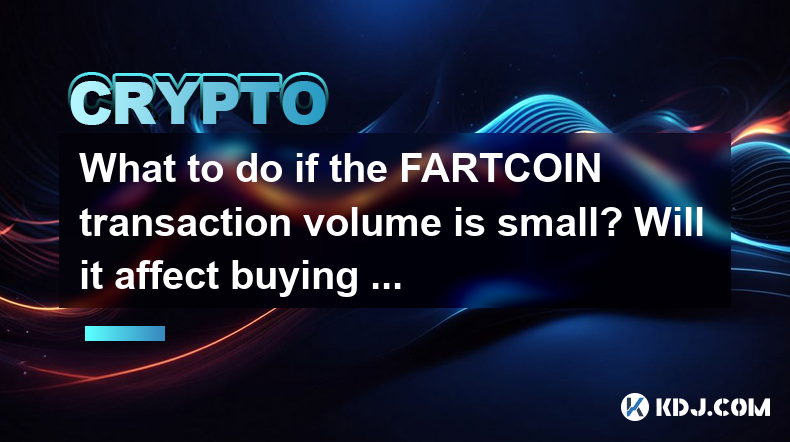-
 Bitcoin
Bitcoin $107,792.7836
-1.83% -
 Ethereum
Ethereum $2,490.3334
-3.99% -
 Tether USDt
Tether USDt $1.0003
0.00% -
 XRP
XRP $2.2177
-2.39% -
 BNB
BNB $652.5191
-1.50% -
 Solana
Solana $146.6253
-4.04% -
 USDC
USDC $1.0001
0.01% -
 TRON
TRON $0.2832
-1.14% -
 Dogecoin
Dogecoin $0.1623
-5.82% -
 Cardano
Cardano $0.5701
-5.05% -
 Hyperliquid
Hyperliquid $38.6009
-4.85% -
 Sui
Sui $2.8604
-5.95% -
 Bitcoin Cash
Bitcoin Cash $487.6897
-2.30% -
 Chainlink
Chainlink $13.0565
-5.05% -
 UNUS SED LEO
UNUS SED LEO $9.0735
0.43% -
 Avalanche
Avalanche $17.6635
-5.16% -
 Stellar
Stellar $0.2382
-2.81% -
 Toncoin
Toncoin $2.7498
-4.12% -
 Shiba Inu
Shiba Inu $0.0...01134
-4.91% -
 Litecoin
Litecoin $86.4080
-3.46% -
 Hedera
Hedera $0.1526
-4.69% -
 Monero
Monero $313.9315
-1.80% -
 Dai
Dai $1.0000
0.00% -
 Polkadot
Polkadot $3.3426
-5.85% -
 Ethena USDe
Ethena USDe $1.0001
-0.02% -
 Bitget Token
Bitget Token $4.4044
-3.80% -
 Uniswap
Uniswap $6.9000
-9.33% -
 Pepe
Pepe $0.0...09552
-5.65% -
 Aave
Aave $263.0698
-6.29% -
 Pi
Pi $0.4693
-4.76%
What to do if the FARTCOIN transaction volume is small? Will it affect buying and selling
Low transaction volume in FARTCOIN can lead to liquidity issues and price volatility, making it harder to buy and sell; use limit orders and trade during peak hours to navigate this.
May 02, 2025 at 03:14 am

If you are dealing with a cryptocurrency like FARTCOIN and notice that its transaction volume is low, it's important to understand how this can impact your ability to buy and sell the coin. Low transaction volume can indeed affect the liquidity and price stability of FARTCOIN, making it harder to execute trades at desired prices. In this article, we will explore the implications of low transaction volume on FARTCOIN and provide strategies to navigate this situation effectively.
Understanding Transaction Volume and Its Importance
Transaction volume refers to the total number of FARTCOIN units that are traded over a specific period, typically measured daily or hourly. This metric is crucial because it reflects the level of activity and interest in FARTCOIN. High transaction volume indicates strong market interest and liquidity, making it easier to buy and sell the cryptocurrency at stable prices. Conversely, low transaction volume suggests less interest and can lead to higher volatility and difficulty in executing trades.
Impact of Low Transaction Volume on Buying and Selling FARTCOIN
When FARTCOIN has a low transaction volume, several issues can arise that affect buying and selling:
- Liquidity Issues: With fewer buyers and sellers, it can be challenging to find a counterparty for your trade. This can result in larger spreads between the bid and ask prices, making it more expensive to buy or sell FARTCOIN.
- Price Volatility: Low transaction volume can lead to increased price volatility. Even small trades can significantly impact the price, making it harder to predict and manage your investments.
- Slippage: When you place an order, you might experience slippage, where the execution price differs from the expected price due to the low liquidity. This can be particularly problematic for larger orders.
Strategies to Navigate Low Transaction Volume
If you find yourself dealing with low transaction volume when trading FARTCOIN, consider the following strategies:
Use Limit Orders: Instead of using market orders, which can be risky in low liquidity environments, opt for limit orders. These allow you to specify the price at which you are willing to buy or sell FARTCOIN, reducing the risk of slippage.
- To place a limit order:
- Log into your trading platform.
- Select FARTCOIN from the list of available cryptocurrencies.
- Choose the "Limit Order" option.
- Enter the amount of FARTCOIN you want to buy or sell.
- Specify the price at which you want the trade to execute.
- Review and submit the order.
- To place a limit order:
Trade During Peak Hours: Transaction volumes tend to be higher during certain times of the day, often when major markets are open. Trading during these peak hours can increase your chances of finding a counterparty and executing your trade at a favorable price.
- To identify peak trading hours:
- Check the trading volume charts on your exchange.
- Look for patterns in volume spikes, which often occur during the overlap of major market sessions.
- To identify peak trading hours:
Diversify Your Trading Platforms: Using multiple exchanges can help you find better liquidity for FARTCOIN. Different platforms may have varying levels of interest in the coin, so diversifying can increase your chances of finding a more active market.
- To diversify your trading platforms:
- Research and select reputable exchanges that list FARTCOIN.
- Create accounts on these exchanges and complete the necessary verification processes.
- Monitor the transaction volumes and liquidity on each platform to determine where to place your trades.
- To diversify your trading platforms:
Consider Smaller Trade Sizes: If you are experiencing difficulty executing larger trades due to low liquidity, consider breaking your orders into smaller sizes. This can help minimize the impact on the market and reduce the risk of slippage.
- To execute smaller trades:
- Determine the total amount of FARTCOIN you want to buy or sell.
- Divide this amount into smaller, manageable chunks.
- Place multiple limit orders at different price levels to achieve your overall trading goal.
- To execute smaller trades:
Monitoring and Analyzing FARTCOIN's Transaction Volume
To effectively manage your trades in a low-volume environment, it's essential to monitor and analyze FARTCOIN's transaction volume regularly. Here are some steps to help you stay informed:
Use Trading Tools and Charts: Most trading platforms offer tools and charts that display real-time transaction volume data. Use these to track FARTCOIN's volume and identify trends.
- To use trading tools and charts:
- Access the trading platform's charting section.
- Select FARTCOIN and choose the volume indicator.
- Analyze the volume data over different time frames to understand the coin's liquidity patterns.
- To use trading tools and charts:
Set Up Alerts: Many platforms allow you to set up alerts for specific volume thresholds. This can help you stay updated on any significant changes in FARTCOIN's transaction volume.
- To set up volume alerts:
- Navigate to the alerts section of your trading platform.
- Select FARTCOIN and set the desired volume threshold.
- Choose how you want to be notified (e.g., email, SMS, in-app notification).
- Save the alert settings.
- To set up volume alerts:
Follow Market News and Updates: Stay informed about any news or developments related to FARTCOIN that could impact its transaction volume. This can include announcements from the project team, partnerships, or changes in market sentiment.
- To stay updated on market news:
- Follow FARTCOIN's official social media channels and website.
- Subscribe to cryptocurrency news outlets and newsletters.
- Join online communities and forums where FARTCOIN is discussed.
- To stay updated on market news:
Conclusion
Navigating a low transaction volume environment when trading FARTCOIN requires a strategic approach. By understanding the implications of low volume, using appropriate trading strategies, and staying informed about market conditions, you can improve your chances of successfully buying and selling FARTCOIN. Remember to use limit orders, trade during peak hours, diversify your trading platforms, and consider smaller trade sizes to mitigate the risks associated with low liquidity.
Frequently Asked Questions
Q: Can low transaction volume lead to FARTCOIN being delisted from exchanges?
A: While low transaction volume can be a concern for exchanges, it is not the sole factor in delisting decisions. Exchanges consider various factors, including regulatory compliance, project activity, and overall market interest. However, consistently low volume can contribute to a decision to delist if it indicates a lack of interest and liquidity.
Q: How can I assess the long-term viability of FARTCOIN despite low transaction volume?
A: To assess FARTCOIN's long-term viability, look beyond transaction volume to factors such as the project's development progress, community engagement, partnerships, and the overall market sentiment. Analyzing these elements can provide a more comprehensive view of the coin's potential.
Q: Are there any tools or services that can help predict changes in FARTCOIN's transaction volume?
A: While predicting transaction volume with certainty is challenging, some tools and services offer insights based on historical data and market trends. Platforms like CoinMarketCap and TradingView provide volume data and analysis tools that can help you make more informed predictions. Additionally, some third-party services specialize in market analysis and may offer predictive models for cryptocurrency volumes.
Q: How does the transaction volume of FARTCOIN compare to other cryptocurrencies?
A: Comparing FARTCOIN's transaction volume to other cryptocurrencies can provide context for its liquidity. Use platforms like CoinMarketCap to view and compare the daily trading volumes of different coins. Keep in mind that factors such as market cap, age, and use case can influence volume, so direct comparisons may not always be straightforward.
Disclaimer:info@kdj.com
The information provided is not trading advice. kdj.com does not assume any responsibility for any investments made based on the information provided in this article. Cryptocurrencies are highly volatile and it is highly recommended that you invest with caution after thorough research!
If you believe that the content used on this website infringes your copyright, please contact us immediately (info@kdj.com) and we will delete it promptly.
- Bitcoin's Pattern Break: Are HODLers the Key to the Next Surge?
- 2025-07-04 18:50:12
- Bitcoin Price, Trump's Bill, and the $150K Dream: A NYC Take
- 2025-07-04 19:50:12
- Ethereum, LILPEPE, and the July Bounce: Will Pepe Steal ETH's Thunder?
- 2025-07-04 19:10:12
- Binance Institutional Loans: Unlocking 4x Leverage and Zero Interest for Whales
- 2025-07-04 19:15:12
- Bitcoin Bull Run: Analysts Eye Peak in Late 2025?
- 2025-07-04 19:20:13
- Pepe Indicators, Bullish Forecast: Can the Meme Coin Rally?
- 2025-07-04 19:25:12
Related knowledge

How to customize USDT TRC20 mining fees? Flexible adjustment tutorial
Jun 13,2025 at 01:42am
Understanding USDT TRC20 Mining FeesMining fees on the TRON (TRC20) network are essential for processing transactions. Unlike Bitcoin or Ethereum, where miners directly validate transactions, TRON uses a delegated proof-of-stake (DPoS) mechanism. However, users still need to pay bandwidth and energy fees, which are collectively referred to as 'mining fe...

USDT TRC20 transaction is stuck? Solution summary
Jun 14,2025 at 11:15pm
Understanding USDT TRC20 TransactionsWhen users mention that a USDT TRC20 transaction is stuck, they typically refer to a situation where the transfer of Tether (USDT) on the TRON blockchain has not been confirmed for an extended period. This issue may arise due to various reasons such as network congestion, insufficient transaction fees, or wallet-rela...

How to cancel USDT TRC20 unconfirmed transactions? Operation guide
Jun 13,2025 at 11:01pm
Understanding USDT TRC20 Unconfirmed TransactionsWhen dealing with USDT TRC20 transactions, it’s crucial to understand what an unconfirmed transaction means. An unconfirmed transaction is one that has been broadcasted to the blockchain network but hasn’t yet been included in a block. This typically occurs due to low transaction fees or network congestio...

How to check USDT TRC20 balance? Introduction to multiple query methods
Jun 21,2025 at 02:42am
Understanding USDT TRC20 and Its ImportanceUSDT (Tether) is one of the most widely used stablecoins in the cryptocurrency market. It exists on multiple blockchain networks, including TRC20, which operates on the Tron (TRX) network. Checking your USDT TRC20 balance accurately is crucial for users who hold or transact with this asset. Whether you're sendi...

What to do if USDT TRC20 transfers are congested? Speed up trading skills
Jun 13,2025 at 09:56am
Understanding USDT TRC20 Transfer CongestionWhen transferring USDT TRC20, users may occasionally experience delays or congestion. This typically occurs due to network overload on the TRON blockchain, which hosts the TRC20 version of Tether. Unlike the ERC20 variant (which runs on Ethereum), TRC20 transactions are generally faster and cheaper, but during...

The relationship between USDT TRC20 and TRON chain: technical background analysis
Jun 12,2025 at 01:28pm
What is USDT TRC20?USDT TRC20 refers to the Tether (USDT) token issued on the TRON blockchain using the TRC-20 standard. Unlike the more commonly known ERC-20 version of USDT (which runs on Ethereum), the TRC-20 variant leverages the TRON network's infrastructure for faster and cheaper transactions. The emergence of this version came as part of Tether’s...

How to customize USDT TRC20 mining fees? Flexible adjustment tutorial
Jun 13,2025 at 01:42am
Understanding USDT TRC20 Mining FeesMining fees on the TRON (TRC20) network are essential for processing transactions. Unlike Bitcoin or Ethereum, where miners directly validate transactions, TRON uses a delegated proof-of-stake (DPoS) mechanism. However, users still need to pay bandwidth and energy fees, which are collectively referred to as 'mining fe...

USDT TRC20 transaction is stuck? Solution summary
Jun 14,2025 at 11:15pm
Understanding USDT TRC20 TransactionsWhen users mention that a USDT TRC20 transaction is stuck, they typically refer to a situation where the transfer of Tether (USDT) on the TRON blockchain has not been confirmed for an extended period. This issue may arise due to various reasons such as network congestion, insufficient transaction fees, or wallet-rela...

How to cancel USDT TRC20 unconfirmed transactions? Operation guide
Jun 13,2025 at 11:01pm
Understanding USDT TRC20 Unconfirmed TransactionsWhen dealing with USDT TRC20 transactions, it’s crucial to understand what an unconfirmed transaction means. An unconfirmed transaction is one that has been broadcasted to the blockchain network but hasn’t yet been included in a block. This typically occurs due to low transaction fees or network congestio...

How to check USDT TRC20 balance? Introduction to multiple query methods
Jun 21,2025 at 02:42am
Understanding USDT TRC20 and Its ImportanceUSDT (Tether) is one of the most widely used stablecoins in the cryptocurrency market. It exists on multiple blockchain networks, including TRC20, which operates on the Tron (TRX) network. Checking your USDT TRC20 balance accurately is crucial for users who hold or transact with this asset. Whether you're sendi...

What to do if USDT TRC20 transfers are congested? Speed up trading skills
Jun 13,2025 at 09:56am
Understanding USDT TRC20 Transfer CongestionWhen transferring USDT TRC20, users may occasionally experience delays or congestion. This typically occurs due to network overload on the TRON blockchain, which hosts the TRC20 version of Tether. Unlike the ERC20 variant (which runs on Ethereum), TRC20 transactions are generally faster and cheaper, but during...

The relationship between USDT TRC20 and TRON chain: technical background analysis
Jun 12,2025 at 01:28pm
What is USDT TRC20?USDT TRC20 refers to the Tether (USDT) token issued on the TRON blockchain using the TRC-20 standard. Unlike the more commonly known ERC-20 version of USDT (which runs on Ethereum), the TRC-20 variant leverages the TRON network's infrastructure for faster and cheaper transactions. The emergence of this version came as part of Tether’s...
See all articles

























































































